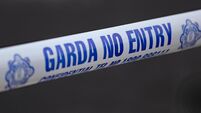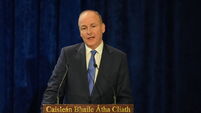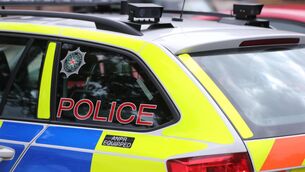Covid-19: 4,642 new cases reported as experts call for ventilation certs in buildings to protect workers

Ventilation and airflow can reduce the transmission of Covid-19.
The Government should introduce ventilation certificates for buildings, so employers know what standards are required, the chair of the Expert Group on Ventilation has said.
Ventilation as a tool to reduce transmission of Covid-19 has become more prominent in messaging from health bodies as understanding of how the virus spreads has evolved.
University College Cork's Professor John Wenger said setting a standard for ventilation would assist owners and employers, and relevant government agencies could then advise on how to improve systems.
"I think people would be much more comfortable walking into a restaurant or venue if they openly displayed a ventilation certificate," Prof Wenger said.
“There is a widely accepted rule of thumb that to ensure good ventilation, each person should be provided with 10 litres of fresh air every second. Why not use that as the standard?"
Prof Wenger said he and other ventilation experts, including University College Dublin architecture lecturer, Orla Hegarty, had been advocating this for some time.
Workplaces or schools can use carbon-dioxide monitors to measure air quality.
"Buildings should be aiming for a CO2 concentration that is as close to outdoor levels — 400ppm (parts per million) — as possible. This can be difficult to achieve when occupancy is high and natural ventilation is the only source of fresh air," he said.
There have been a further 4,642 confirmed cases of Covid-19 in Ireland, the Department of Health said.
As of Saturday morning, there were 556 patients in hospital with the disease, with 107 of those in intensive care, up from 96 on Friday.
HSE chief executive Paul Reid said that 250 of those hospitalised are receiving enhanced respiratory supports.
On Friday, 5,483 new cases of Covid-19 were confirmed which was the first time the daily case numbers exceeded 5,000 since January.
Prof Wenger said a CO2 concentration of less than 800pm "represents good ventilation", but above 1,400 to 1,500ppm "indicates poor ventilation or crowding".
"Hospitality can be more challenging, but based on measurements I have made and seen in hotels, restaurants and pubs, I think it is possible to keep CO2 levels under 1,000ppm, which, I think, is generally adequate," he said.
Prof Wenger said some schools operating in "stressful environments" have told him of levels consistently higher than 1,500ppm.
"This was predicted and ventilation checks and fixes should have been done by qualified professionals during the summer months," he said. "But this window of opportunity was not seized upon, despite it being recommended by the expert group advising the Government."
A parliamentary response released to Sinn Féin spokesman on education, Donnchadh Ó Laoghaire, indicated that schools can apply for a minor work grant or emergency grant assistance to "address ventilation enhancements on a permanent basis".
The WHO issued a 'roadmap' on indoor ventilation in March 2021, having previously focused on other approaches.
Here, Nphet has frequently rejected criticism that it has not emphasised the role of ventilation.
Virologist and director of the National Viral Reference Laboratory, Cillian de Gascun, highlighted the importance of ventilation this week, saying: "It is important to be aware of how Covid-19 and other respiratory viruses spread and how you can limit the risk of transmission."
"Ventilation is very important. If socialising indoors, ensure windows are open and air is circulating. Keep social distance of 2m, where possible, and use face coverings."
Prof Wenger described this intervention as "essential information", saying: "I would also add that, sometimes, open windows do not provide sufficient fresh air and having a door open, or even ajar, can help improve airflow."








